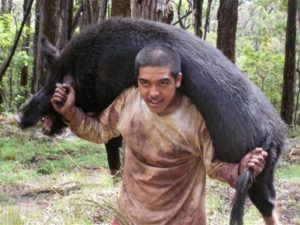Wednesday, September 21st, 2011
.jpg)
Community Contributed by G.T. Larson
In the heated debate concerning global warming, much of the discussion has been centered on greenhouse gasses. Unfortunately, much of what is being said by both sides in this debate, at times, resembles hot air. As we examined in our last installment, if it were not for naturally occurring greenhouse gasses, life on Earth would not exist as we know it today. They are the insulation for us in our atmosphere to keep us from freezing. Where we run into trouble, is when the atmospheric balance of the gasses becomes imbalanced, particularly if we have contributed to this shift. The problem at the center of this debate is how much, if any, we, as humans, are adversely contributing to the atmosphere’s inventory of these gasses.
.jpg)
The term anthropogenic, used a lot these days in the discussion of global climate change, is defined as: of, relating to, or resulting from the influence of human beings on nature. We have discussed in earlier installments that solar energy from the sun enters our atmosphere and much of is absorbed by the earth’s surface areas, then radiated back towards space. A large portion of this radiated energy is reradiated back to the earth’s surface by our natural blanket – greenhouse gasses. But when the earth’s natural blanket gets denser, by an increase in these gasses, then more heat is retained in the atmosphere and the global average temperatures begin to rise.
This is a very simplified look at a very complex subject, but, very simply put, for all of humanity and specifically us here on Molokai, a very important subject. CO2, carbon dioxide, is one of greenhouse gasses of concern. One of the main sources of CO2 is the burning of fossil fuels, such as oil, natural gas and coal. Here on Molokai, coal use is not a factor and natural gas or propane is not used extensively. Gasoline and diesel are the main fossil fuels that are used by most of us. Even if one drives an electric vehicle, if it is charged from the local grid, it is, in essence, diesel powered. All the electricity from the local power grid is diesel generated. The concept of electric powered vehicles on Molokai is a great idea, but unless the electricity used to charge the vehicle is solar or wind generated, it is still a fossil fueled vehicle.
Are all the earth’s CO2 emissions solely the result of human activity? Are all the greenhouse gas imbalances that occur, anthropogenic (you and I caused it)? No, but it is sometimes played out that way in certain media outlets and those that lean in the opposite direction seem to deny most negative effects that humanity has had and is having on our planet. If nothing else, this intense debate has encouraged us to examine our environment and our personal and corporate effect on it. Until next time, Aloha Ke Akua.







.JPG)
.JPG)
_0.jpg)
_0.jpg)
.jpg)
.jpg)

.jpg)



